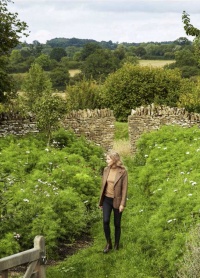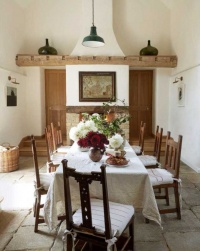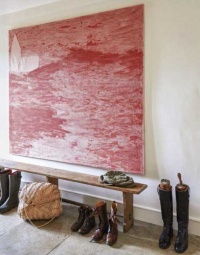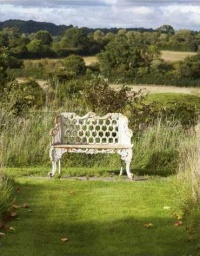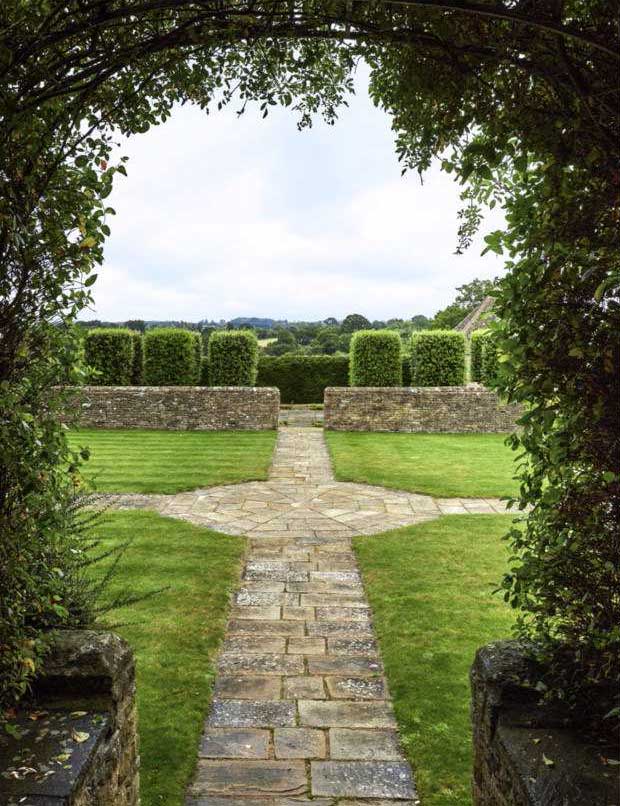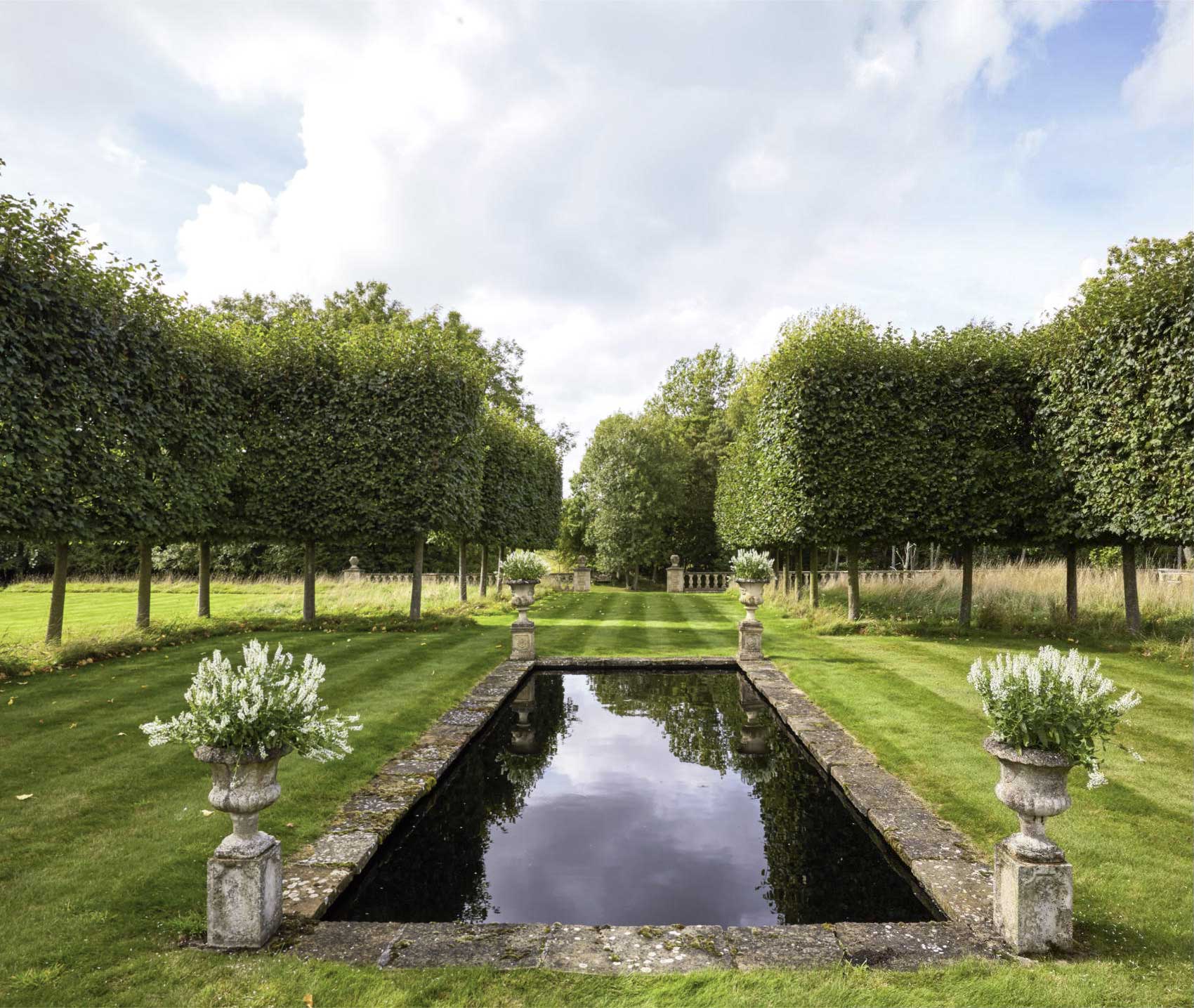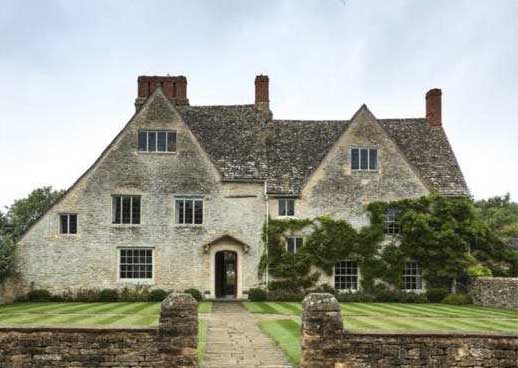Vogue USA - The Secret Garden
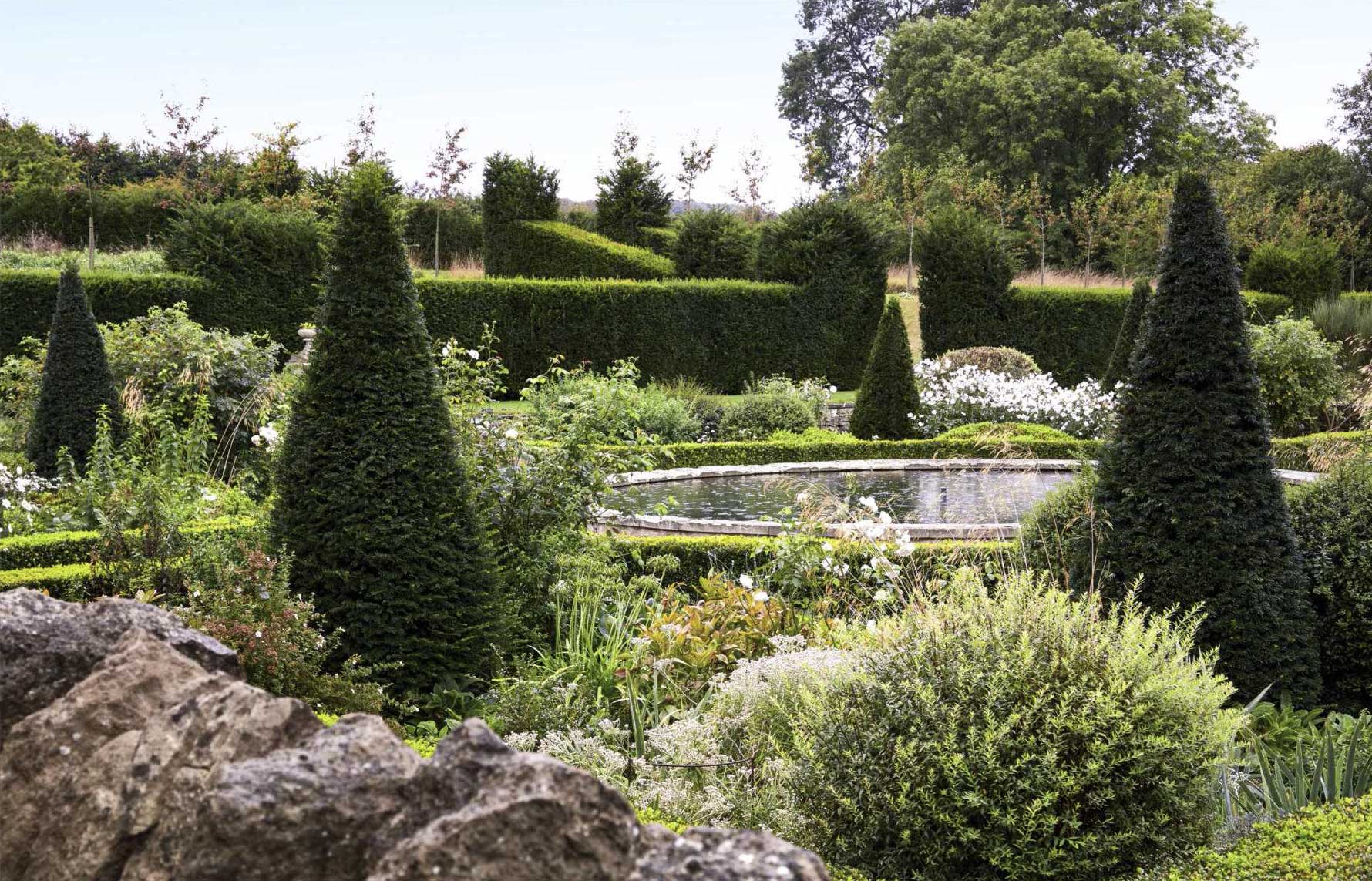
A painstaking restoration of a Jacobean manor led to a few delightful surprises for Hugo and Silka Rittson Thomas.
Polly Devlin
Giugno 2018
A painstaking restoration of a Jacobean manor led to a few delightful surprises for Hugo and Silka Rittson Thomas.
Land does not come easily in the Cotswolds, a sought-after area of outstanding natural beauty. It is countryside with exquisite views of green fields, unfolding wolds, and valleys that roll into the distance. Sylvia Plath once described this part of England as “a country on a nursery plate.” There are no towering crags here, no unruly romantic chasms. There’s also not much spare land hanging around, populated as it is by sundry gentry, ex–prime ministers, general cognoscenti, and the occasional media villain.
Nevertheless, seventeen years ago photographer and collector Hugo Rittson Thomas stumbled upon Walcot House, a sixteenth-century farmhouse that had been almost demolished by the Duke of Marlborough in order to provide cut stone and masonry for Blenheim Palace, and promptly snatched it up. The remnants of the original Walcot are still traceable in ghostly demarcations; one of the old cellars lies deep below an ancient garden wall.
“When I first saw it, I fell in love with its wild energy,” says Hugo. But the old manor was sorely derelict. The airy, high dining room adjoining the kitchen, with its old flagged floors and long refectory table, was, in his words, “a damp and unpleasant place. The soil outside came halfway up the windows.” Hugo and his wife, Silka Rittson Thomas, a curator and art adviser, added a huge and handsome “garden room” (their drawing room) and renovated the bathrooms, one of which features a Moroccan tiled fantasy. They kept some original treasures: enormous oak beams, twisting staircases, paneling in the dining room, and a vast wisteria covering half the main facade of the house.
Now the overall effect is of a sunny, delightful space with room to hang contemporary art in sometimes startling juxtaposition. In the outer hall, for example, a postcard hunting collage by Gilbert & George sits next to quintessentially English country jackets by Purdey—more usually associated with a hearty philistinism—and a photograph of a younger Hugo with Princess Diana. (His book The Queen’s People includes unique portraits of Her Majesty and members of her family: Prince William, Camilla, Duchess of Cornwall, and swagger portraits of traditional courtiers and servants of the royal household.)
Elsewhere in the house are paintings by, among others, Gillian Carnegie, Nate Loman, R. H. Quaytman, and Friedrich Kunath, whose painting of moonshine on a lake hangs in the kitchen. A chintz-covered resin armchair, which obligingly lights up when sat upon, squats in the garden room. Above the mantel rests a composite drawing by Pablo Bronstein of a version of Walcot superimposed on an image of Blenheim Palace—Hugo and Silka, in homage, have jokingly christened the painting Bleincot.
Outside, the garden incorporates elements of English traditional grand gardening at its best—topiary, allées, pleached lime walks and parterres, meadows, orchards, stone terraces, ancient walls, cascades, and ponds. High, square yew hedges cut like sculpture loom above the swimming-pool garden, where a leprous-looking gargoyle gushes water. The swimming-pool cover slyly disappears into a crevice. Magic! “No . . . German engineering,” Hugo says. A miniature arboretum has been planted by landscape gardener Marie- Christine de Laubarède, who also helped with the design. There, yew trees now look like bustling green-crinolined Victorian ladies vying for space in a ballroom.
The Rittson Thomases’ bittersweet challenge is the deer, who are thrilled to bits by the new dining opportunities. “The dear little deer,” Hugo says gloomily, “are a blooming pest—they chomp everything in and out of their path.” The Quercus ilex trees anchoring the new parterre around the glittering circular pool and fountain have somehow escaped the deer’s depredations and are already significantly large, echoing in their steep topiary the roof of the house behind them—one of the biggest roof rakes or slopes, they’ve been told, of any house in England.
On another axis, a clipped yew hedge leads toward a wild bank of grasses and showstopping flowers. Silka uses homegrown blooms and grasses from the Walcot estate at her TukTuk Flower Studio in Mayfair, where she creates seductive bespoke creations. She is responsible for the constant planting and design of new gardens— along with the cutting garden, the vegetable garden, and a wild meadow. Lime trees border a green walk riven by a rectangular mirror pond, its surface reflective and tenebrous due to a special dye that keeps its water as dark as polished ebony.
A balustraded parapet guards a steep decline where wide steps plummet down toward the woods and startling carp ponds. When the garden designers Julian and Isabel Bannerman initially came to look at the grounds, they told a surprised Hugo that there might be deep ponds lying buried in the adjoining woods. Since the soil was entirely dry, he was somewhat skeptical. But the house had reportedly been part of a monastery before the Reformation, and carp traditionally provided the food for monks; Hugo (with the help of English Heritage, which operates and guards historic properties) discovered five carp ponds fed from a cascading spring. These watery medallions are now classified as ancient monuments with the same rating as Stonehenge. “The thing we love most,” says Hugo, “is walking out every night when it’s clear and enjoying the stars.”
The soil spoil from the excavation of the ponds was used to create a rising spiral mound with a mushroom-dotted summit. The hope is that one day this mound will become an amphitheater for plays, concerts, and other events. In the meantime, it makes a viewing point over the enticing countryside.
“What we are doing now,” Hugo says, “is seeing how the garden goes on by itself. But however it is, I like it. A garden is never finished. That’s what is exciting about it. You think you’ve almost got it finished, and then you start again.”
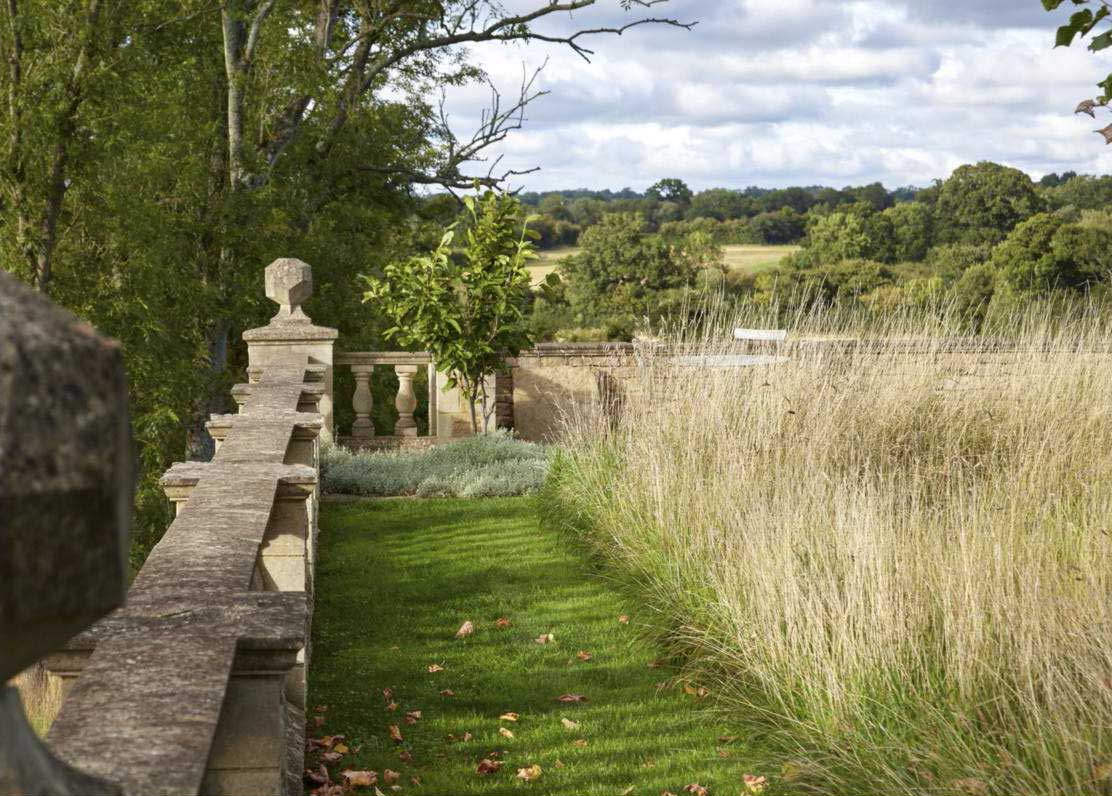
FAR SIGHTED Encased by balustraded parapet, a grass terrace overlooks the ground’s carp ponds and orchards.
